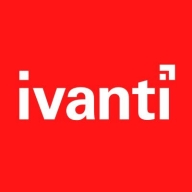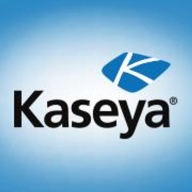

Kaseya VSA and Ivanti Patch for Endpoint Manager compete in endpoint management. Ivanti Patch for Endpoint Manager is favored for its superior features, while Kaseya VSA is more competitively priced and better supported.
Features: Kaseya VSA is praised for its automation, remote control capabilities, and user-friendly dashboards. Ivanti Patch for Endpoint Manager stands out for its comprehensive patch management, security features, and more robust security options.
Room for Improvement: Kaseya VSA requires better reporting capabilities, faster customer service response times, and enhancements in software stability. Ivanti Patch for Endpoint Manager needs improvements in integration with other systems, a more intuitive user experience, and smoother large-scale deployment.
Ease of Deployment and Customer Service: Kaseya VSA deployment is straightforward with responsive customer service. Ivanti Patch for Endpoint Manager also has an easy deployment process but lacks in customer service responsiveness. Kaseya VSA has an edge in deployment efficiency and support satisfaction.
Pricing and ROI: Kaseya VSA is more affordable with lower setup costs and quicker ROI due to faster implementation. Ivanti Patch for Endpoint Manager involves a higher initial investment but is perceived as worth the cost over time. Kaseya VSA is better for budget-conscious buyers, while Ivanti Patch for Endpoint Manager suits those prioritizing advanced features.
| Product | Market Share (%) |
|---|---|
| Kaseya VSA | 8.2% |
| Ivanti Patch for Endpoint Manager | 2.1% |
| Other | 89.7% |


| Company Size | Count |
|---|---|
| Small Business | 25 |
| Midsize Enterprise | 4 |
| Large Enterprise | 4 |
Patch for Endpoint Manager can swiftly detect vulnerabilities in Windows, Mac OS, Linux, and hundreds of third-party apps (Acrobat Flash/Reader, Java, Web browsers, and more) and deploy expertly pre-tested patches everywhere you need them.
Kaseya VSA (Virtual System Administrator) is a cloud-based IT management software that provides a comprehensive set of IT management tools for small and mid-sized businesses, including remote monitoring and management, help desk ticketing, patch management, and automated IT processes.
VSA provides a centralized platform for IT administrators to manage and monitor multiple devices and endpoints, including desktops, laptops, servers, and mobile devices. The software offers real-time monitoring, automated alerts, and reporting capabilities to help administrators quickly identify and resolve issues.
VSA also includes a help desk ticketing system for managing and resolving IT support requests, as well as a patch management module for keeping systems up-to-date and secure. Additionally, the platform offers a range of automated IT processes, including software deployment and inventory management, to help administrators streamline their work and improve efficiency.
Kaseya VSA Features
Kaseya VSA has many valuable key features. Some of the most useful ones include:
Kaseya VSA Benefits
There are many benefits to implementing Kaseya VSA. Some of the biggest advantages the solution offers include:
Reviews from Real Users
Kaseya VSA is a solution that stands out when compared to many of its competitors. Some of its major advantages are that it’s easy to use, has a good Live Connect feature, and its unified portal.
A Team Lead at a tech services company explains what he finds most valuable about the solution: “The ease of access and ease of use was great. When Kaseya is deployed on the customer's computer, we have access to the customer. We just need the computer's name or ID, or sometimes, if the user has the same name as their first name, we can find them that way.”
"The most valuable piece of the puzzle for me is what they call Live Connect. It is the piece that allows you to support an end-user without having to take the keyboard and mouse,” says another Automation Team Lead at a tech services company.
PeerSpot reviewer Allan E., Director Of IT / Purchasing Manager at Macomb/St. Clair Workforce Development Board expresses, “One of the most appealing features is that it combines remote control, patch management, and software management into a single portal."
We monitor all Patch Management reviews to prevent fraudulent reviews and keep review quality high. We do not post reviews by company employees or direct competitors. We validate each review for authenticity via cross-reference with LinkedIn, and personal follow-up with the reviewer when necessary.